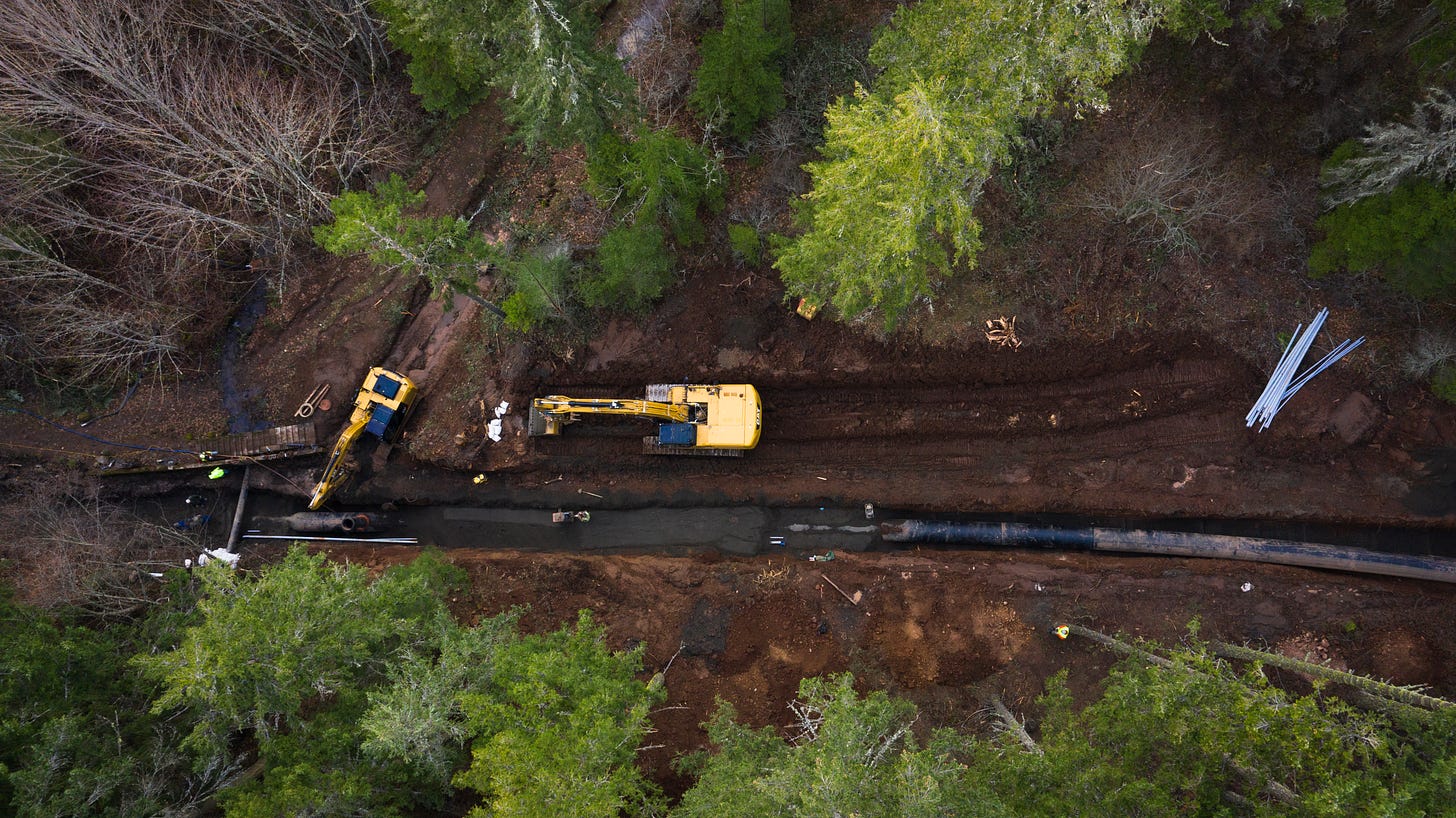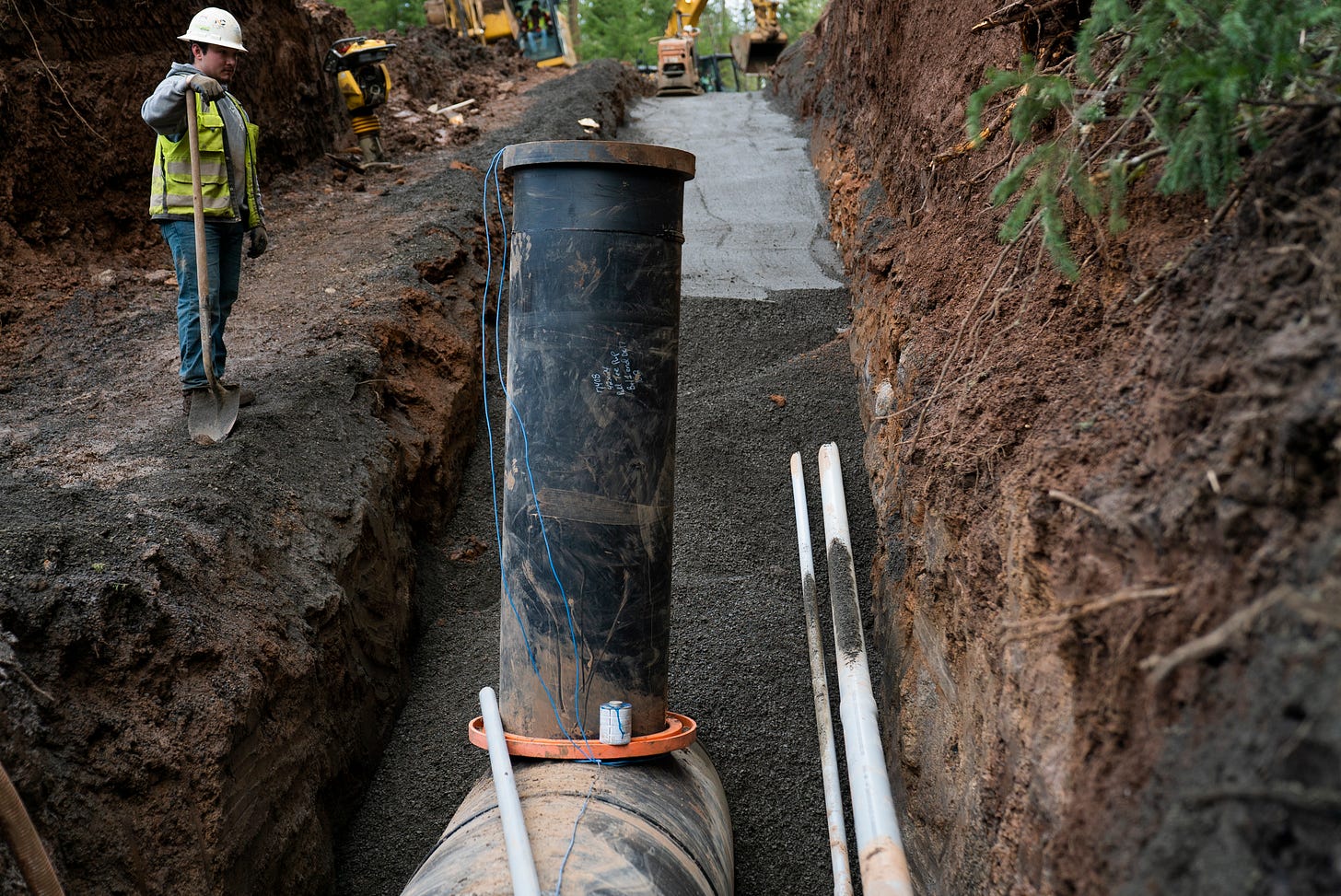Julie O'Shea: Moving much more than water
How investing in our irrigation infrastructure can lead to a more connected, innovative, and sustainable rural Oregon.
Julie O’Shea is the Director of the Farmers Conservation Alliance. To learn about FCA and its efforts in irrigation modernization go to fcasolutions.org

The flames from the Almeda Fire blazed through the towns of Talent and Medford, Oregon on the morning of Tuesday, September 8th, leaving a trail of complete and utter devastation in its wake. Entire neighborhoods, as well as community gathering places and critical infrastructure, burned to the ground.
This destruction was a fraction of the total environmental, financial, and emotional damage caused by wildfires last year.
In 2020, wildfires in Oregon burned at least 1 million acres of land, cost $354 million to fight, and destroyed more than 4,000 homes. As the country moved on to the next headline, Oregon communities including Talent and Medford were left with a central question:
How does a town rebuild in a way that maximizes resilience, increases agricultural and economic security, and enhances stewardship of natural resources?
One way—irrigated agriculture. Jack Friend, General Manager of Medford Irrigation District, says, “Coming out of this fire, it’s an opportunity to see the importance of irrigated agriculture not only as a fire buffer but as a water source to serve as secondary emergency suppression. Any resiliency that we can bring to that to make it more available is something that we definitely want to look at.”
Support for irrigated agriculture is more than just a way to respond to fires and rebuild ravaged communities; it’s also a means to invest in the future. Oregon and the federal government are in the process of figuring out how to invest in both fire prevention and mitigation, and at the same time, looking to expand broadband infrastructure and increase energy security.
This is the perfect opportunity to re-think existing financial mechanisms and our regulatory framework to enable the construction of flexible, dynamic infrastructure that can meet the needs of our rural communities for the next hundred years. For example, irrigation districts hold thousands of rights-of-way that wind through rural Oregon and across the Western United States—many were granted at the turn of the last century and haven’t been updated in as many years. That road map alone, if viewed with innovation in mind, creates a framework for implementing forward-thinking and cost-effective solutions.
That road map can expedite efforts to make rural communities more innovative and sustainable. A significant barrier to improving telecommunications and energy infrastructure in rural areas has been the expense associated with siting, right-of-way, engineering, permitting, and installation. Pipeline projects being planned to improve water availability for farmers and fish already cover most of these costs, making the co-location of fiber optic and electric distribution lines more feasible and cost-effective. Imagine if every single irrigation modernization project in Oregon installed two conduit lines – one for broadband infrastructure and one for buried transmission lines.
Using those existing rights of way, we can expand co-located infrastructure for pennies on the dollar. This broadband infrastructure would create equity for rural students currently without access to the internet, as well as enable precision farming capabilities. In addition, buried transmission lines would provide a safe way to continue electrical service when the risk of wildfire is high. Lastly, the pressurized water created by modern irrigation infrastructure can provide water to emergency responders, decreasing response times.
Modernizing these irrigation systems also creates secure and reliable water for farmers and ranchers. In addition, modernization creates significant water savings that can be protected instream for fish and other aquatic species, increases water quality, enables community-scale hydropower generation and energy efficiency opportunities. Modern systems are better for food, farms, and fish.
With support from Oregon’s Natural Resources Conservation Service and Energy Trust of Oregon, the Farmers Conservation Alliance (FCA) is currently piloting this co-location concept with East Fork Irrigation District (EFID) in Hood River, Oregon. The project with EFID will provide valuable lessons learned, as well as a broader understanding of the impact of this work, creating a pathway to standardizing this practice. Existing and newly proposed state and federal programs can be leveraged to finance and streamline the process for installing the new West – rural communities equipped with the infrastructure necessary to make the most of technological advances all the while safeguarding resources and land.
Meeting the challenges we face today often does not require broad-sweeping changes. Oftentimes, we can accomplish what we need with a 5-degree shift to existing policies and programs that chart out a new course for our future. Maximizing our investments in infrastructure, particularly focusing on co-location, can help provide agricultural security, energy independence, and community resilience for the next hundred years.
**********************************
Keep the conversation going:
Facebook (facebook.com/oregonway)
Twitter (@the_oregon_way)
Check out our podcast:




